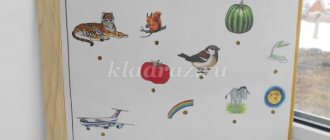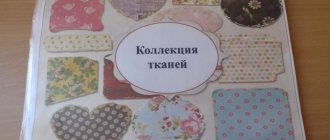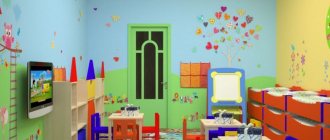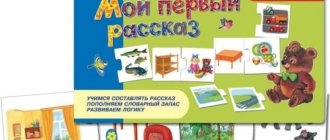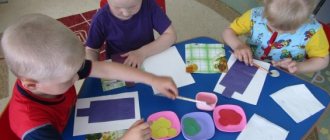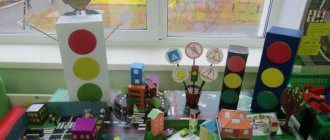Do-it-yourself didactic games and manuals for kindergarten
DIY didactic games
Hello, dear colleagues, friends! I want to share with you ideas for making games with my own hands (these games were made by me over the past three years), I wanted to collect all the games in one section.
Layout "Pets"
was made from waste material (cardboard and newspaper tubes) for preschool children.
You can view the master class on making a model
here Goal: to consolidate ideas about pets. Objectives: Educational: To consolidate children's knowledge about domestic animals.
Note the characteristic features of animals. Strengthen the ability to compare, find similarities and differences. To develop the ability to distinguish between animals and their young. Develop the skill of writing a short story about animals. Educational: Develop children's memory, thinking, imagination. To develop children's interest in living nature and emotional responsiveness. Educational: To instill in children a love for their native land. To instill in children a kind attitude towards animals, to create a desire to help them. Model "Miller's Yard"
Miller's yard.
Master class Purpose: the layout is intended for direct educational and play activities of children of senior preschool age, for interior decoration. The goal is to promote the emergence and development of emotional and cognitive interest in the historical and cultural heritage of Russia. Objectives: 1. To consolidate knowledge about the characteristics of peasant labor and the profession of a miller.
2. Expand the understanding of the life of a peasant family in Rus'. Didactic game: “Feed the bun”
Goal: development of fine motor skills and tactile sensitivity. Equipment: small plastic jars with lids, beans.
Making a manual: depict a kolobok (or other character) from self-adhesive paper on the lid. Make a hole in the mouth with a stationery knife (it’s convenient to cut a hole if you twist the knife in a circle) “Fisherman”
There are many variations of this game. It can be complicated depending on the age of the children. I offer my options with children of the younger and middle groups. A child catches a fish with a fishing rod. 1. “What size and color is it?” Purpose: to exercise children in determining the size of the fish; consolidate knowledge of color. 2. “Where does it grow?” Purpose: to learn to classify objects according to the topics “Vegetables”, “Fruits”. 3. “Who lives where” Purpose: to learn to classify objects according to the topics “Domestic, wild animals” 4. “Where is whose mother” (additional cards with images of animals are needed) Purpose: to learn to select domestic and wild animals, name them correctly. 5. “The fourth odd one” Purpose: to teach how to classify objects by topic.
"Carnations and Rubber Bands"
For this game you need wooden plywood, stationery nails and rubber bands. Purpose: for the development of fine motor skills, visual, color and spatial perception, imagination;; consolidate knowledge of various types of geometric shapes and lines.
Game "Funny Dwarfs".
Goal: learn the names of the days of the week and their order, consolidate the concepts of yesterday, today, tomorrow.
First option. “Which gnome is gone.” Children close their eyes, the teacher removes one gnome. Children open their eyes and guess which gnome ran away. Second option. Children close their eyes, the teacher changes the order of the gnomes. Children open their eyes and place them in the correct sequence. Third option. We teach together with the children yesterday and tomorrow, if today is Monday, yesterday and tomorrow, if today is Tuesday, etc. goal: to develop tactile perception in children; enrich children's active vocabulary with new words, develop memory, attention, imagination, imaginative thinking; fine motor skills. "Tactile caps"
For the game I took: - bottled water caps; - different textured fabric, fur, sandpaper, leather, beads; - glue. Progress of work: - I cut out circles of the same size as the lids from various materials and glued them on. How to play: - Put all the caps in an opaque bag and ask the child to pull out a cap with a smooth texture, etc. - “Find a pair” - “Find dissimilar caps” (for example, fur and leather) - “Guess what (who) it looks like” - “Guess who I am” (red fur - fox, sandpaper - hedgehog, smooth skin - frog)
Educational game “Squares with a secret”
Goal: to enrich children’s active vocabulary with new words, to develop memory, attention, and fine motor skills. The sense of touch or tactile perception plays an important role in development. And it is associated with the development of imagination, imaginative thinking and creative speech abilities in children. And training fine motor skills of the fingers stimulates the timely development of speech skills. Each “square” is sewn from opaque fabric. It's a flat 6x6 pad with a cardboard frame inside and one small object in the center. There should be a pair of “squares” with identical objects inside. This game is multifunctional. The first option is “Find a pair.” The child feels the “square” and finds a match for it. Second option. It is necessary to divide the “squares” into two piles so that each does not contain the same ones. Place the first pile on the table, and distribute the “squares” from the second to the players equally. Players place their “squares” in front of them. The adult becomes the leader, but can also take part in the game. The presenter takes the “square”, feels it and describes its contents in words. For example, he says that there is a large smooth stone there. The player who has the paired square takes it for himself. The first person to get a pair for each of their “squares” wins.
Educational game "Candy"
Goal: learn to differentiate non-speech noises, find identical-sounding “candy,” develop logical thinking, attentiveness, and memory. Hearing is no less important a tool for understanding the world around us than sight and touch. The ability to hear and distinguish sounds also requires constant training. The better a child hears, the faster he will learn to understand the meaning of what is being said to him and the faster verbal communication will become an effective way for him to gain new knowledge. Each “candy” is made from kinder surprise. The “candies” are filled with various fillings that produce a certain sound when shaken, and are lined with bright fabric. A pair consists of “candies” that make the same sound when shaken, with the same filling. These could be beads, cereals, paper clips, etc. The first option is “Find the same one.” Two people are playing. “Candy” is laid out on the table, the player takes any one “candy” and rattles it, and then takes another one and also shakes it. You cannot take more than two “candies”. If the sound is different, then the player puts each one in its original place, and the turn passes to the next player. If the sound is the same, then the player takes both candies for himself and gets the right to immediately make another move. The game continues until there are no more candies on the table. And this is a similar game to “coffee girls”, the manual is made from chocolate eggs and covered with thermal film
Game for developing fine motor skills “Surprise Box”
"Box of Feelings"
This manual is made from a shoe box. Two circles are cut out on the lid, the sleeves are sewn from cotton fabric, the whole box is covered with self-adhesive. I would be glad if anyone gets some ideas! There are so many interesting ideas on the site, I want to do a lot, but I don’t have enough time for all the time! I wish everyone creative success, ideas and more time to implement them! Thanks to everyone who looked at the page and watched to the end!
We recommend watching:
Do-it-yourself didactic game for kindergarten “Know-It-All” Didactic manual “Grandfather Planted a Turnip” Games with clothespins. Didactic manual “Who eats what” Do-it-yourself educational toys “Balls - Smeshariki”
Similar articles:
Do-it-yourself didactic games for preschoolers on the topic “Sense Organs”
DIY didactic game for preschoolers. World of flora and fauna
Do-it-yourself didactic game for kindergarten on the topic “Transport”
DIY didactic game for preschoolers
Didactic game for children 4-7 years old “Fairytale Hotel”
Dominoes "Fairy-Tale Heroes"
Children's age: 3-5 years.
Material: cards with drawings of heroes of the Violet Forest – 200 pieces. cards with drawings of the characters’ halves – 400 pieces. They are dismantled in smaller batches.
Instructions for the game:
1. Domino game in the usual version: cards are distributed to children in 6-10 pieces. Choose a driver in any way. Children follow each other, putting their cards on the field. If necessary, take additional cards in the “bazaar”. The winner is the one who first runs out of cards and there are none in the “bazaar”.
2. Lay out the cards one after another, without repeating the character’s drawing, but placing a different one each time - Geo, Raven, Lopushok, All, Slice, Fifa Caterpillar and so on. Calculate how long the path would be if you do not repeat the drawings of the characters.
3. Build columns of pictures, where in the first column the first picture is Baby Geo. Second column, first picture – Raven Meter. Third column, first picture – Lopushok. And so on. At the same time, place identical heroes in the first row in each column. For example, in the first row everyone has Mishik, in the second row there is the kitten Timoshka, in the third there is Invisible All. Count how many columns there are, how many rows there are in each column.
4. Tasks for the children - to populate a house with 5 floors and 5 entrances so that the inhabitants do not repeat themselves. Baby Geo went to visit his friends - in the first entrance he went 2 floors up - who did he come to visit?, on the 3rd floor he went 2 apartments to the right - who did he come to?, from there he went to ... any direction . The kid came to the middle apartment on the middle floor - who was he visiting? Where can he go now (direction of movement and number of floors or apartments) - the game “Fly”.
5. Build a table of dominoes - 2x2, 3x3, 4x4, 5x5, etc., so that the drawings of the characters do not repeat. We ask the children who stands where, who is friends with whom, who is above whom, below whom, who is the neighbors on the right, on the left, standing between whom. Various options for questions on plane orientation.
Games “Loto – Colorful Gnomes”
Material: cards of a large field, differing in color - gnome heroes: red Kohle, orange Ohle, yellow - Jelly, green - Zele, blue - Gele, blue - Sele, purple - Fi, white - Belyash, gray - Serge, black - Chernysh.
Cut-out pictures - gnomes, geometric shapes, game details - 10 colors.
Option 1: all fields and drawings in the pictures are the same size.
Field of 4 parts. In the center there is a colored gnome, on top there is a circle, a square; below - a triangle, a rectangle - when you put all the figures on a large field - the drawing of a gnome is not visible.
Field of 6 parts. First row – petal, gnome, circle; second row – checkbox, square, circle.
Option 2: Sizes of fields and cards – large, medium, small. Place the cards on the field depending on the size of the picture and the field.
Option 3: the size of all three fields is large. The drawings on them are large, medium, small.
Field of 9 parts. The first column is a petal, a flag, a turtle; second column – Hedgehog One, red gnome Kohle, one from Transparent Number sticks; third column – circle, triangle, square.
Explanations: – the petal is opposite the circle – because their shape is the same – a circle; The flag is opposite the triangle - because the cutout on the flag is triangular; The turtle is opposite the square - because its shape, legs, and head are similar to a square. Hedgehog One and the number 1 together with the red gnome Kohle - because red is the first color in the rainbow. Hare Deuce and number 2 - together with the orange gnome Okhle - because orange is the second color in the rainbow and so on.
Instructions for the game:
1. Fill in all parts of the large field with pictures of the appropriate color and size. Many people can play, maybe 1 child can take the cards themselves and put them in the appropriate places.
2. The presenter fills in large fields with pictures - with errors - the size, color, shape does not match. The child is looking for where the mistake is.
3. Lay out all the cards with pictures on the table (first with one type of lotto, then more pictures). The classification task is to collect and arrange all the gnomes, red, light, bright, dark, one after another on the table; all red (blue, yellow, green) cards; all circles, squares, flags; all are not round, not blue, not big; all the numbers, all the little animals; build a tower of pictures - at the bottom - large pictures, above - medium ones, even higher - small ones.
4. Change of size. Place large pictures on the small gnome, small ones on the middle one, medium ones on the large one.
5. Color change. Place blue cards on the red gnome, gray cards on the black one, and white cards on the yellow one. Collect all the colorful pictures on one field.
6. Change of properties - color, size, shape. Collect on one field all the drawings that are not repeated in color, size, or image.
7. Make a train of trailers - each trailer differs from the previous one in one of the properties (image, color, size).
8. All rearrangements are clearly stated by the child, why you put this particular drawing - a change in properties.
9. Two rows of cells - 6 (or less or more) on each row. On the first row are red, yellow, blue, green, light blue, and gray gnomes. On the second row there are geometric shapes of the same color, but in a different order and one cell is empty. The gnomes were walking and lost their bags, found them and mixed them up. Let's help them take their handbags, their colors. You can only move pieces to an empty cell. The gnomes are waiting for us to help them. First, the figure is placed on an empty square of the desired color, like the top gnome - this is the first pair - how many squares and in which direction did we move it? Then again on an empty cell we place a figure of the corresponding color like the top gnome. Thus, all the gnomes teach their colored bags.
